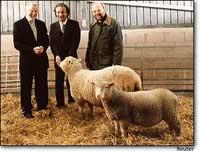Cloning today
The conclusions drawn in the coming years from the experiments of Dolly and other cloned animals have rarely been mentioned. But it should be noted that cloning is not yet simple. On the one hand, the process is not simple and the degree of success is very low. For example, in order to be born Dolly, the program was carried out with at least 400 sheep.

On the other hand, the problems also appear in the cloning of the animal. One of them has to do with the aging process. Cells have time-taking systems. This is very pleasant, as they do not behave the same way in childhood, adulthood or old age. We can say that we are programmed to age genetically. To clone Dolly he left an adult sheep cell, so at the time of birth his cells did not act as a lamb, but as an adult sheep.
An article published today in the specialized journal Nature Genetics explains another similar problem. All the animals that we have father and mother receive 23 chromosomes each, that is, the father gives us a copy of his genetic information and the other mother. All of our features are complemented by information from both sources, being the combination of both results. To do this, the cells place chemical marks on the chromosomes and thus determine the part of the source of each parent to be used.
In Dolly's case, instead of having two parents, he had only one. But the cells didn’t know that and began to mark how biology ‘commands’. Therefore, some information was not used correctly and caused problems.
In cloned animals their consequences are often remarkable. The most common problems are obesity, heart disease, and lung malformations. In addition to cloning, some genetic defects of cells produce these consequences. The article has opened a new way to work in the laboratory. The problem has been found and now comes the turn of the solution.
Buletina
Bidali zure helbide elektronikoa eta jaso asteroko buletina zure sarrera-ontzian











